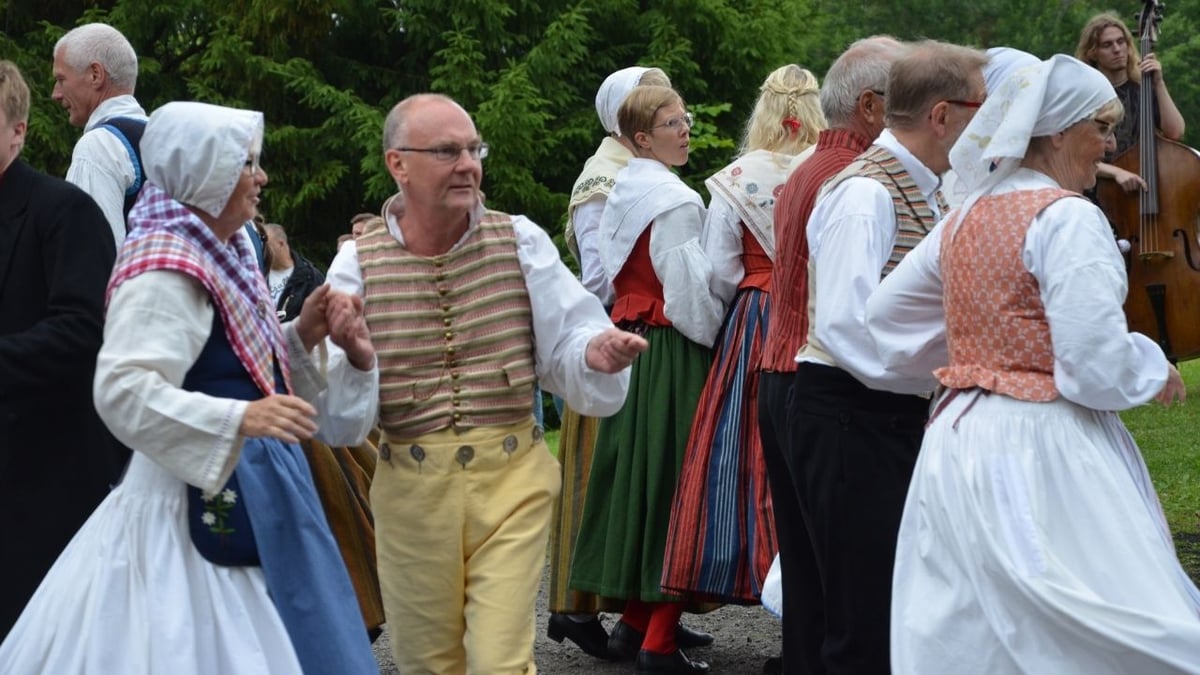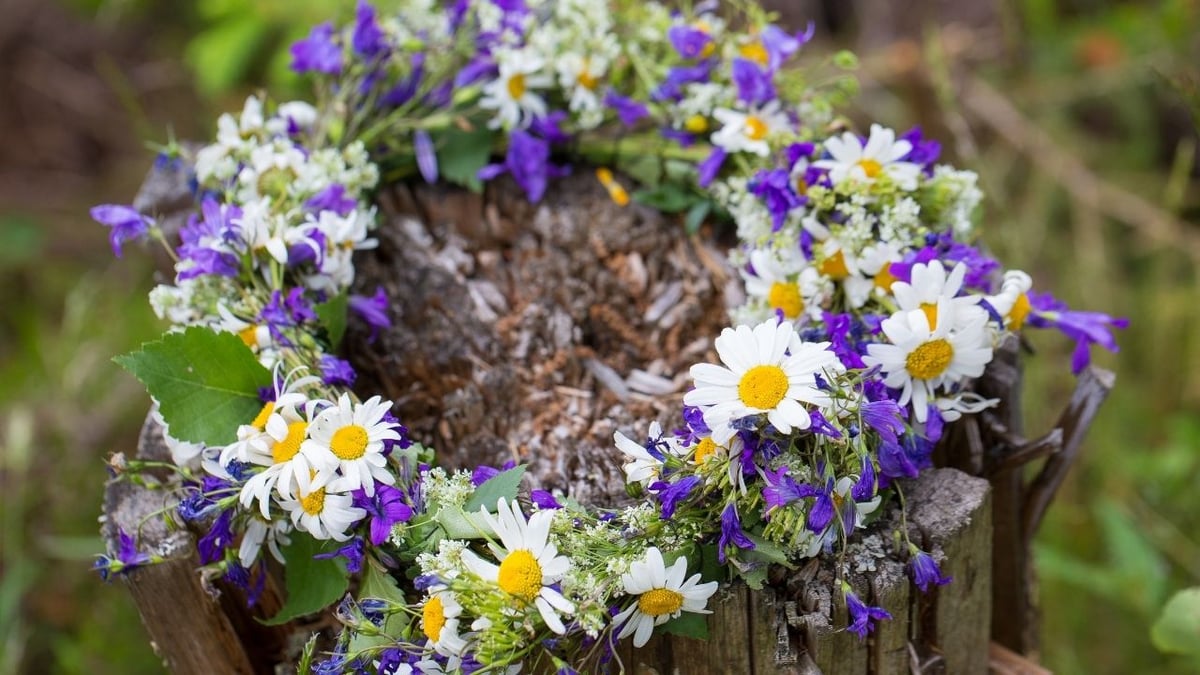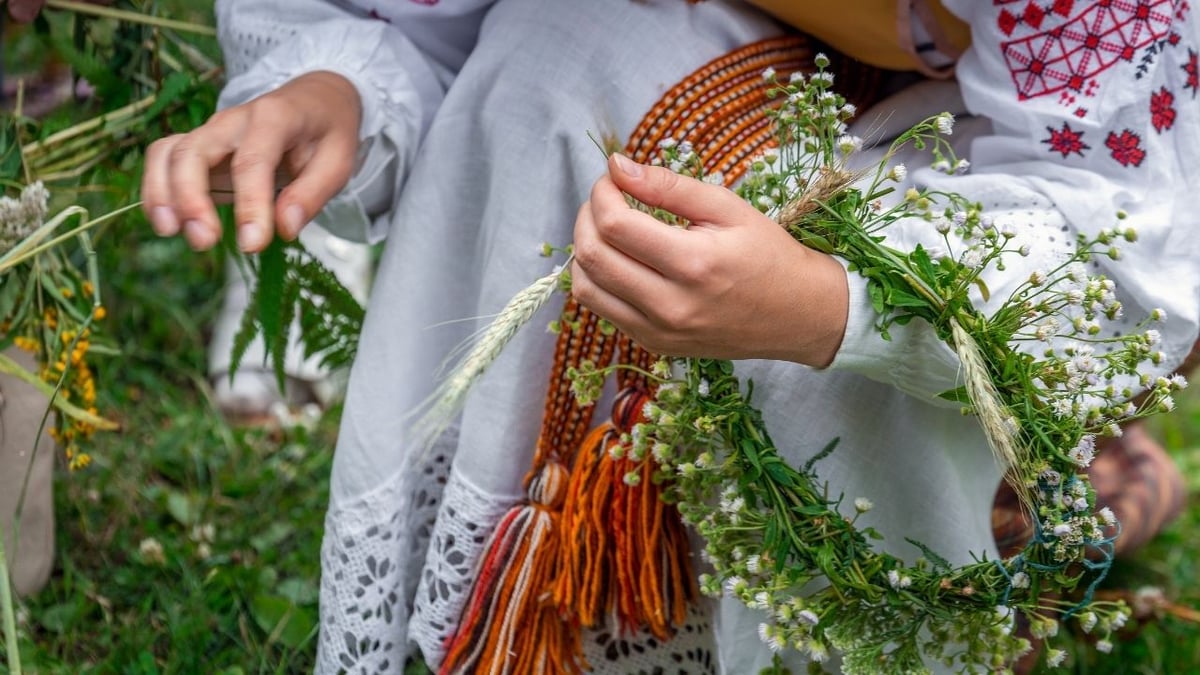If you are planning a trip to the midnight sun, midsummer is a great time to get in touch with your pagan roots.
The whole of Scandinavia celebrates the summer solstice and the abundance of light and warmth by getting in touch with nature. Other than religious holidays, midsummer is the biggest annual pan-Scandinavian festival by far.
There are a number of ways to celebrate the changing of the seasons in Scandinavia, most involving bonfires, feasting and drinking in the open air, and dancing. Festivities usually start on Midsummer’s Eve, also known as The Feast of Saint John.
In essence, the festival harks back to the Viking era, with its elemental celebration of light and nature. The old Norse calendar only had two seasons, Summer and Winter, and the point when the sun reached its zenith at midsummer before the days began to grow shorter was especially significant. This was a time to pray to the Norse gods of fertility, Freyia and Freyr, for an abundant harvest. Burning a pile of special flowers and aromatic herbs was a pagan ritual to ward off evil spirits, which were believed to be particularly powerful on Midsummer’s eve.

Like all other important pagan holidays, it was co-opted by the Christian church in the Feast of Saint John (the Baptist, precursor to Christ), when his birthday was fixed as taking place on June 24. Saint John’s Eve is celebrated the night before, on the 23rd.
Sun worship was an integral part of many ancient religions, including the Romans. The word ‘solstice’ comes from the Latin word ‘solstitium’, meaning the moment the sun stands still. It is also believed that maypole dancing has its roots in the ancient Roman traditions of dancing around a decorated tree to give thanks to the goddess Flora. Since flowers do not bloom until June in the North, the maypole, that beribboned fertility symbol decorated with flowers and leaves, has become a midsummer pole in Scandinavia.
To increase the success rate of their prayers, Pagans would carry out certain rituals during Midsummer. Evil forces were held to be at their strongest on the longest day of the year, so huge bonfires would be lit to ward them off.
Certain herbs and flowers were believed to have magical powers during the solstice and some young women still place seven different wildflowers and herbs under their pillow on Midsummer’s Eve to this day, hoping to dream about their future husbands.

Midsummer was a national holiday in Scandinavia until 1770, although it is still actively celebrated throughout the Nordic countries, most intensely in Sweden. The best-known Swedish midsummer festival is the brief annual boat racing season around Lake Siljan. The vessels are longboats, known as kyrkbatar (see Wilhelm Marstrand’s painting of 1853), which were traditionally used to row to church on Sundays. The boat race was instigated in 1936 to prevent the deteriorating traditional boats from falling into disuse.
Nowadays, the summer solstice can be a fascinating blend of both Christian and pagan traditions. People flock to the countryside, wearing garlands of wildflowers in their hair. Out in the wilds of nature, there are picnics with pickled herring and other local specialties and singing drinking song, Norges Skal, accompanied by fiddles and accordions, and people oil their vocal cords with vodka or schnapps. Pretty, circular dances with ribbons are also held around the maypole in parks and gardens in the towns.

Midsummer in Norway
Like the Danes, Norwegians celebrate Jonsok or Sankthansaften (“Saint Hans Aften”, or St. John’s Eve), on June 23. Norway holds the record for the biggest midsummer’s eve bonfire, which in 2016 was piled up over 150 feet tall.
In Denmark, clothed twig effigies of a witch are still thrown into the bonfire on Midsummer’s eve. In recent years, there has been a move away from this, and other figures are burned on the bonfires instead, such as cows or male figures.
Although Midsummer’s day is not a national holiday in Norway, some locals still like to mark the occasion. Festivities begin in the afternoon with a barbecue, after which families play with their children or relax. Then everyone goes to watch the bonfires being lit, one after the other, all along the coastline like a string of magical lanterns. There is dancing around fires both along the coast and in the mountains, fortune telling and traditional fare, including sweet pancakes.
At Flekkefjord in southern Norway, there is a tradition of setting an old boat on fire. This dates back to the 1800s, when some children lit kindling in a boat they had found before dragging it through the streets. To avoid a fire risk, boats are now anchored in the ocean to be burned, like floating beacons. More modern, non-wooden boats became common after about 1940, taking over the tasks of the traditional wooden oselvar boats. Sadly, many of these beautiful vessels may have fallen prey to burning as families got rid of them. UNESCO has placed them on its intangible heritage list and supports a workshop for new builds of this cultural gem.
Midsummer in Iceland
Solstice traditions in Iceland are more superstitious than religious. Icelanders celebrate Jónsmessa, the “Mass of John the Baptist”, on June 24, when wishing stones and magical herbs are believed to be especially potent. At this time, cows are also said to have the power of speech, and seals shed their skin to take on human form. Another belief is that rolling around naked in the early morning dew cures you of any ills you may be suffering, so be sure to get up early!
House elves are a thing in Iceland and belief in them is high. They are called Huldufólk, the hidden people, or elves. It is said that if you sit at the crossroads on Midsummer’s eve, elves will come to you from all four directions, beckoning and offering you untold riches. But no matter how tempting they are, you must never go with them, or you will be driven mad. If you manage to hold out until dawn, however, the elves will vanish, leaving their treasure behind.
Many people gather at Reykjavik late at night to watch the sun dip below the horizon before rising back up again, an eerie and awe-inspiring sight. There are also art and music festivals in the capital.
Greenland
Nowadays, solstice traditions have become bound up with national identity in Greenland. The sun dipping over the ocean horizon even features on the national flag. Greenland was a Danish colony until 1953 and is now a semi-autonomous territory in the Kingdom of Denmark. The national day, known as ‘Ullorteneq’, meaning ‘the longest day’, has been celebrated on 21st June all over the island since 1983. Patriotic speeches are given, flags are ceremonially hoisted and flown and there is music and folk dancing. Many locals wear traditional costumes for the occasion.
In Ilulissat in southern Greenland the midnight sun lasts for two whole months, and up in Qaanaaq in the north, for three and a half months. This is traditionally the time for catching fish and smoking them for winter storage.
If you’d like to visit Greenland and experience the midnight sun, see:
Or for an adventure journey tracing the thousand-year-old route of the Norse settlers from Greenland to Iceland:







